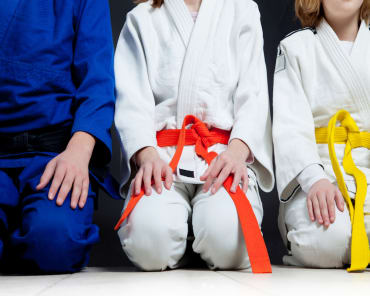
Starting your journey in Brazilian Jiu-Jitsu (BJJ) is exciting, but the array of gear and equipment can be overwhelming for beginners. Here’s a comprehensive guide to help you understand what you need to get started and how to choose the right gear.
The Gi (Kimono)
The Gi, also known as a kimono, is the primary uniform for BJJ practitioners. It consists of a jacket, pants, and a belt. When selecting a Gi, consider the following:
- Material: Most Gis are made from cotton or a cotton blend. Look for durable, high-quality fabric that can withstand the rigors of training.
- Fit: Your Gi should fit snugly but not restrict movement. Different brands have varying sizes and cuts, so try on several to find the best fit.
- Weave: Gis come in different weaves, such as single, double, and gold weave. Single weave is lighter and more comfortable, while double weave is more durable but heavier.
The Belt
The belt signifies your rank and progression in BJJ. Beginners start with a white belt and progress through various colored belts. When choosing a belt:
- Length: Ensure the belt is long enough to wrap around your waist twice and still leave enough length for a knot.
- Durability: Look for a belt made of sturdy material that will withstand daily training.
Rash Guard
Rash guards are tight-fitting athletic shirts made from spandex or polyester blends. While not mandatory, they are highly recommended:
- Protection: Rash guards help prevent mat burns and reduce the risk of skin infections.
- Comfort: They wick away sweat, keeping you cooler and more comfortable during training.
- Fit: Choose a snug fit that allows for unrestricted movement.
Shorts or Spats
For no-gi BJJ, you’ll need grappling shorts or spats (leggings). Here’s what to consider:
- Material: Look for durable, stretchable fabric that can endure the rigors of grappling.
- Fit: Shorts should be comfortable and allow a full range of motion. Avoid shorts with pockets or zippers that can cause injuries.
- Spats: These provide added protection and compression, which can aid in muscle recovery.
Mouthguard
A mouthguard is essential for protecting your teeth and jaw during training:
- Fit: Choose a mouthguard that fits comfortably and stays in place during intense activity.
- Type: Boil-and-bite mouthguards offer a custom fit and are a popular choice for BJJ practitioners.
Protective Gear
Additional protective gear can enhance your safety during training:
- Knee Pads: These provide cushioning and support, especially useful if you have previous knee injuries.
- Groin Protector: Essential for male practitioners to protect sensitive areas during training.
- Ear Guards: While not commonly used in BJJ, they can prevent cauliflower ear, a common issue in grappling sports.
Choosing the Right Gear
When selecting gear, prioritize quality and comfort. Investing in high-quality equipment will ensure durability and better performance. Here are some tips:
- Research Brands: Some brands specialize in BJJ gear and are known for their quality and fit.
- Ask for Recommendations: Fellow practitioners and coaches can provide valuable insights on the best gear.
- Try Before You Buy: Whenever possible, try on gear to ensure proper fit and comfort.
Starting your BJJ journey with the right gear sets the foundation for a positive training experience. Remember, comfort, durability, and protection are key. With this guide, you’ll be well-equipped to step onto the mat confidently and safely.






